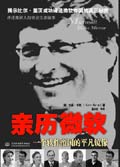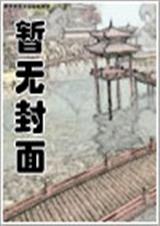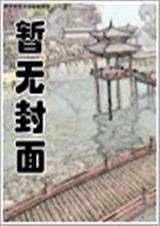微软的梦工场-第1部分
按键盘上方向键 ← 或 → 可快速上下翻页,按键盘上的 Enter 键可回到本书目录页,按键盘上方向键 ↑ 可回到本页顶部!
————未阅读完?加入书签已便下次继续阅读!
序言 在中国创新
微软公司在1991年成立了微软研究院,那是因为我们认识到投资于能够拓展知识疆界,并创造新技术“为前人所不能为”的基础研究的重要意义。
十年前,我和微软当时的CTO内森·梅尔沃德(Nathan Myhrvold)谈到,或许是时候扩展我们在基础研究方面的布局了——除了雷德蒙研究院之外,微软公司还应在欧洲及亚洲那些新兴的、拥有强劲创新潜力的国家部署研发团队、发掘和培育智力资源。
可以说,微软公司是最早认识到中国和亚洲的研发潜力的全球性企业之一。当我在1997年访问中国期间,中国学生身上所洋溢着的才智、激情和创造力,给我留下了深刻的印象。也正是缘于这次访问,对我们于1998年在北京成立基础研究院的决定起到了至关重要的作用。
时至今日,这所坐落在北京的研究院远远超出了我的最高期望——在创立的头几年,就已经为公司的技术知识和产品储备做出了巨大贡献。接着,这所研究院逐步壮大,吸引了来自亚太地区的顶尖研究员,并发展成为现在大家所熟知的微软亚洲研究院。过去10年间,她可谓功勋卓著,如今已经成为微软公司在美国本土以外规模最大的基础研究机构。
今天,微软亚洲研究院在洪小文博士的带领下继续为微软公司乃至整个计算机产业做出着重要贡献。在国际顶级学术会议上,每当业内专家聚集在一起讨论当前面临的艰难挑战时,总能听到来自微软亚洲研究院的研究员们宣布重大突破的声音。同时,在微软最重要的产品中,像Windows Vista、Office 2007、Xbox 360,大家都能发现来自微软亚洲研究院的关键性创新。
不仅如此,微软亚洲研究院及其主要创立者的影响已经扩展到了整个公司。现在,微软亚洲研究院的两位前院长——沈向洋博士和张亚勤博士,正在微软非常重要的部门——微软公司全球搜索产品开发部和微软中国——担任着掌门人的角色。
微软亚洲研究院给整整一代计算机研究者带来了积极的影响。通过与本地研究机构和大学的密切合作,研究院帮助提升了中国计算机科学研究的水平,并助力培养了数以千计的年轻科学家和工程师。
作为一家全球性企业,微软之所以成功的关键,主要取决于能够吸引来自世界各地的优秀人才聚集在一起。这也是微软亚洲研究院的根本愿景——建造一座了不起的计算机研究院,让全中国乃至全亚洲最聪明的人济济一堂。通过提供微软所独有的专业技能、理念和资源,让这些研究员专心致志地致力于划时代的突破和发现——正是由于他们的努力和鼓舞,我们当初的期望才取得了超乎想象的成功。
借此机会,我衷心地感谢一如既往地支持微软亚洲研究院的各界朋友、同仁和伙伴们。祝贺微软亚洲研究院10年来的出色工作。未来十年,我盼望着继续见证他们的创新,让这个世界变得更加美好。
英文序言 Innovating in China
We launched Microsoft Research back in 1991 because we recognized the importance of investing in work to expand the boundaries of our knowledge and create new technologies that acplish things that weren't possible before。
Later I mentioned to then Microsoft CTO Nathan Myhrvold that it might be a good idea to expand our fundamental research layout – not only in Redmond but in emerging markets as well; like Europe and Asia; where I knew there was great potential for innovation … where we could set up R&D teams; discover talented minds; and train human resources。
We were one of the first global panies to recognize China and Asia’s R&D potential。 When I visited China in 1997; I was deeply impressed by the talent; the enthusiasm; and the creativity of the Chinese university students I met。 That trip played a pivotal role in our decision to establish a fundamental research lab in Beijing in 1998。
The Research lab in Beijing exceeded even my own high expectations by making significant contributions to our technical knowledge and products within its first few years of existence。 As a result; the lab expanded to include the top researchers from the entire Asia Pacific region; and is now known as Microsoft Research Asia。 It has achieved remarkable things in the past 10 years and it is now our largest research lab outside of the
Led today by Dr。 Hsiao…Wuen Hon; Microsoft Research Asia has made important contributions to Microsoft and the puting industry。 At conferences where researchers gather to discuss the difficult challenges in our industry; researchers from Microsoft Research Asia are announcing and publishing significant advances。 In many of our most important products; from Windows Vista; to Office 2007 and Xbox 360; you’ll find key innovations that were developed here in this lab。
The impact of Microsoft Research Asia and the people who helped build it extends across the pany。 Today; two former managing directors of Microsoft Research Asia; Dr。 Ya…Qin Zhang and Dr。 Harry Shum; are running some of Microsoft’s most important groups—our technical teams in Search and in Microsoft China。
Microsoft Research Asia has also had an important positive impact on an entire generation of researchers in puter science。 By working closely with local research institutes and universities to advance the state of puter science research; the lab has helped train thousands of young scientists and engineers from across the region。
Microsoft is a global pany and our success depends upon our ability to attract the best talent from around the world。 That's the basic idea behind Microsoft Research Asia—to create a great research lab where we can bring together the very brightest people from across China and Asia。 We then provide them with the expertise; the ideas; and the resources that only Microsoft can offer; so they can focus on a new generation of breakthroughs and discoveries。 Because of your hard work and inspiration; this approach has been even more successful than we could have hoped。
To my friends; colleagues; and partners at Microsoft Research Asia; I want to extend my thanks for your incredible contributions。 Congratulations for 10 years of great work。 I look forward to seeing how the innovations you will deliver in the next decade will continue to make the world a better place。
Bill Gates
电子书 分享网站
“MSRA”的n种含义 林宙辰
作为研究院的少数几个老员工,我相信,能对“MSRA”这四个字母提供多少种不同的解释是能够体现员工对研究院的了解程度的。
新来的员工估计只知道“MSRA”是“Microsoft Research Asia”的简拼。这当然是最简单的解释了。“Microsoft Research Asia”在2002年以前叫“Microsoft Research China”,由于和“Microsoft Research Cambridge”的简拼相同,一度采用“MSRCN”作为简拼。不过2001年底升格后,就走出了“避讳”的阴影。而工龄在五年以上的员工才会知道“MSRA”还可以解释成“Microsoft Red Army”。
这是从2003年青岛offsite上叫开的。当时所有员工都要做野外拓展,以加强员工间相互了解和增进合作意识。员工分成八个组,每个组起一个代号。我是我所在组的组长,我的组的服色是墨绿色,受“野外拓展”的启发,取“野战排”为代号。而Harry 所在组的代号是“微软红军”,这显然是受了他们的服色为红色的启发。他们很是为这个代号而洋洋得意,见人就吹嘘他们的组如何英勇顽强,肯定能拿冠军 ,结果却拿了个第三。不过Harry因为“微软红军”的名字感到意气风发,他显然是把整个研究院都看成“微软红军”了。有此滥觞,随着研究院的影响日益扩大,“MSRA”后来就演变成了“Microsoft Research Army”的简拼,2004年有同事甚至设计了“微软军团”的臂章(见下图),彰显研究院在计算机研究方面有“席卷天下,包举宇内,囊括四海之意,并吞八荒之心”。Harry也经常跟人开玩笑:“MSRA stands for Microsoft Research Army。”这个解释曾经见诸各大媒体,为许多人耳熟能详。
但是这里我想重点提的却是另外一个更为深刻的解释,它只有极少数人知道。微软经常被外界批评为“缺少企业文化”。的确,微软并没有总结她的企业文化并告之以世人。比尔·盖茨也只不过不痛不痒地说:“在微软,唯一不变的就是变化本身。”研究院作为微软的小环境既继承了微软的总体风格,又有自己的特点。下面我就讲一个故事。
话说2006年9月初,我、文继荣陪同院长Harry访问了上海交通大学、华中科技大学和武汉大学等几所高校。经过连日奔波,总算访问结束了,Harry很高兴,就拉我和文继荣去吃夜宵放松放松。等到鸡汤、豆皮、热干面下肚,大家开始眼饧耳热,话也渐渐多起来。因为我们这次带了自然语言组开发的对联系统去各大学演示,演讲时经常使用各大学的校训来做上下联以最大程度地激发学生的兴趣,所以我们自然就聊到是否也给研究院弄个“院训”。虽然没吃过猪肉,但也见过猪跑,这几个大学的校训无非是“严谨”、“博学”、“求实”之类,所以前两个“院训”就被定为“谦虚”、“谨慎”。此乃发自研究院创办和发展不易,我们只有“战战兢兢,如临深渊,如履薄冰”,时刻保持危机,才能继续光大之感慨。显然,仅这两个“院训”是不够的,但是继续罗列“创新”、“笃行”之类的话又嫌落入俗套,这时我们的恶作剧心理又开始发作。Harry首先把他平常挂在嘴边的“纯朴”加上,这是他评论某人idea很平淡无奇或是思想很天真时的词语。他一说:“你真是太纯朴了!”,被评论的人就搞不清楚他到底是在表扬还是在揶揄,于是大家在哈哈一笑中就过去了。出于我们这几天对对联落下的后遗症,我们还需要再加一个和“纯朴”能







